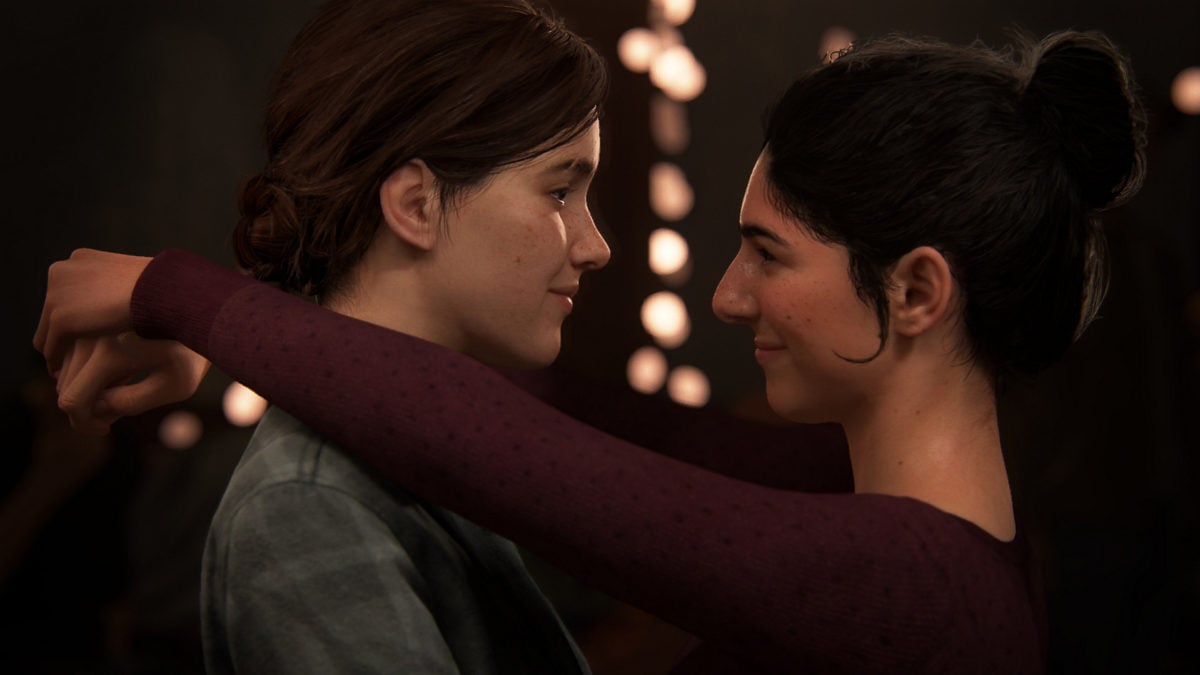The Netflix documentary “Disclosure: Trans Lives on Screen” has been applauded (rightly so) for bringing transgender representation, and the lack of it, in TV and film to the forefront.
But one screen is missed in the documentary — the video game screen.
It’s worth noting, and maybe a bit serendipitous, that the juggernaut video game “The Last of Us Part II,” which includes lesbian, bisexual, and trans characters, and “Disclosure” were released on the same day, June 19th. “The Last of Us Part II” is the sequel to the mega popular and critically acclaimed 2013 action video game “The Last of Us.”
“The Last of Us Part II”
“The Last of Us Part II” isn’t the first mainstream video game to showcase LGBTQ characters or same-sex relationships between the player character and others, but it is the most successful high budget video game with queer characters who are center stage in the narrative.
“The Last of Us Part II,” from developer Naughty Dog, is one of the fastest-selling games in Playstation 4’s history. It sold more than 4 million copies in just three days after its release, Playstation said.
That representation is a huge step forward, Bo Ruberg, author of “The Queer Games Avant-Garde,” told The Independent.
“LGBTQ players are feeling excited and empowered by the presence of these characters in such a prominent game,” Ruberg said. “The fact that certain gamers are opposing the game including LGBTQ characters just shows how important this kind of queer representation is.
“It’s shaking up what close-minded, toxic people think video games should look like — which helps us see how much we need this change,” Ruberg said.
‘Work for a Million,’ pioneering lesbian pulp fiction, gets graphic novel makeover

Ellie (Ashley Johnson), left, and her girlfriend, Dina (Shannon Woodward), are two prominent queer characters in the acclaimed blockbuster game “The Last of Us Part II.” (Photo: Naughty Dog)
Robert Yang, a game developer and academic, also told The Independent that the queer representation is “fine,” but it doesn’t go far enough.
“It doesn’t really support LGBTQ communities or politics, it’s just a small gesture from an entertainment company,” Yang said. “When we talk about representation, we also need to talk about who makes and controls that representation. By that metric, queer artists and creators everywhere, and especially LGBTQ people of color, are still struggling to be heard.”
Queer video game history
Queer characters have been featured in video games more than 30 years. C.M. Ralph’s 1989 murder-mystery adventure game “Caper in the Castro” is considered the first game with gay or lesbian characters. The story is set in San Fransisco and follows a lesbian detective hunts for her kidnapped drag queen friend.
In the past decade, queer representation has improved in high budget games (“Dragon Age: Inquisition,” “Mass Effect,” and “Overwatch”), but the strongest and most visible queer narratives usually have been found in indie games.
“Gone Home,” “Life is Strange,” and “Butterfly Soup” are a few indie titles that also have appealed to a larger, mainstream audience.
Javicia Leslie is the new Batwoman; Ruby Rose praises casting
The plot (spoilers ahead)
“The Last of Us Part II” takes place 25 years after an infectious fungus jumps from insects to humans, causing a global pandemic that wipes out the majority of the human population by turning them into zombiesque creatures.
The first protagonist of the game is Ellie who was one of the main characters in the original game and is one of the very few examples of an openly lesbian character in video games. She is accompanied by her partner, Dina, who is bisexual.
The other playable character in the game is Abby, who is actually the antagonist for the first half of the game. When players get a chance to step into her shoes they spend much of her story helping a young transmasculine character named Lev, played by transmasculine actor Ian Alexander, fight for their life against a religious cult.
Long Beach police’s dark history of discriminating against gay men
The pushback
Despite the game being a hit for developers Naughty Dog, “The Last of Us Part II” has also faced intense criticism from right-wing trolls.
The gaming news website Polygon reported, “much of this dislike has been masked as ‘debate’ over whether Abby’s buff physique could even be possible in the post-apocalypse, with some going so far as to mistakenly label her a trans woman.”
Trans representation
In an interview, Alexander told NBC News that the game is a big step forward for LGBTQ people and especially trans representation in not only video games, but also media as a whole.
“I was just thinking this is going to mean so much to the kids out there playing this game that might be either questioning their gender or maybe they came out as trans,” Alexander said. “They’re just trying to feel seen. They’re trying to feel heard. This is going to mean a lot to a lot of people.”
